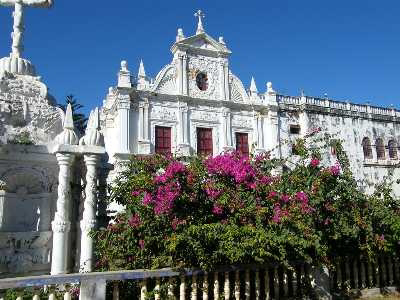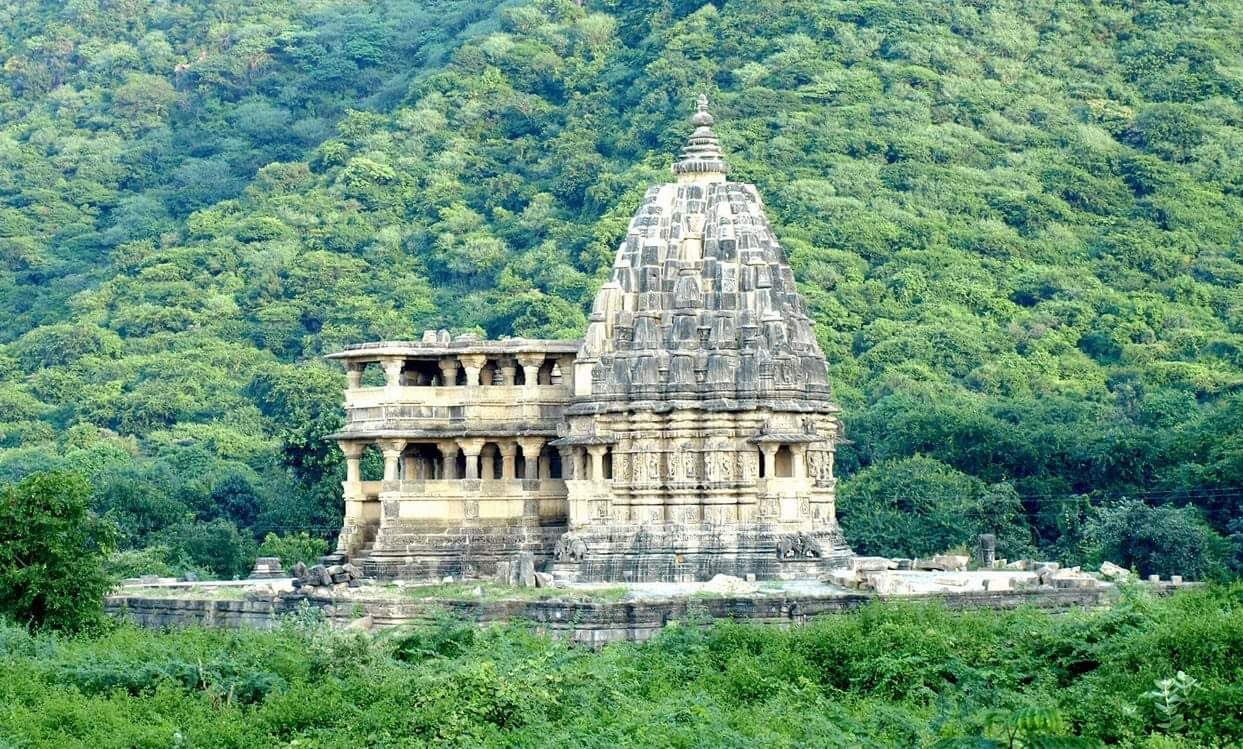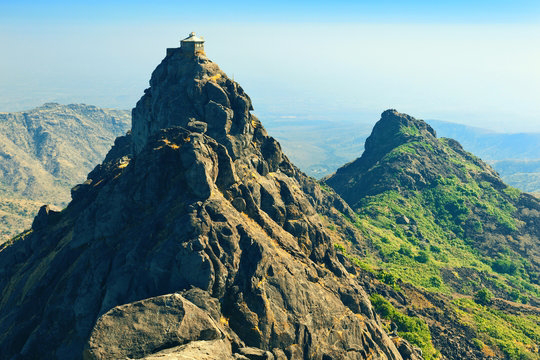Monday, 31 July 2023
DIU KNOWN FOR ITS BEAUTIFUL BEACHES, FORTS AND TEMPLESDIU IS A POPULAR TOURIST DESTINATION
Sunday, 30 July 2023
THE WHITE DESERT OF KUTCH (INDIA) POPULAR TOURIST DESTINATION
Saturday, 29 July 2023
GOA KNOWN FOR ITS BEAUTIFUL BEACHES
Friday, 28 July 2023
WORLD FAMOUS GIR NATIONAL PARK AND WILDLIFE SANCTUARY, GUJARAT (INDIA)
Gir National Park is a popular tourist destination, with over 1 million visitors per year. The park offers a variety of activities, including safaris, nature walks, and bird watching. The park is also home to a number of hotels and lodges, which provide accommodation for visitors.
Visit the Gir Museum: The Gir Museum is located in Sasan Gir, and it tells the story of the park and its inhabitants. The museum has a collection of artifacts, photographs, and exhibits that document the history of the park.
Wednesday, 26 July 2023
HISTORICAL TEMPLES AND MONUMENTS, GHUMLI (INDIA)
Tuesday, 25 July 2023
WORLD FAMOUS SOMNATH TEMPLE IN GUJARAT (INDIA)
Somnath Temple is one of the most sacred Hindu pilgrimage sites in India. It is located in Prabhas Patan, Veraval, Gujarat, on the western coast of India. The temple is dedicated to Lord Shiva, and is one of the twelve Jyotirlinga shrines of Shiva.
The Somnath Temple has a long and storied history. It is believed to have been first built by the Moon God, Soma, in the 1st millennium BCE. The temple was later destroyed by the Muslim invader Mahmud of Ghazni in 1026. It was rebuilt several times over the centuries, only to be destroyed again by Muslim invaders. The most recent destruction of the temple occurred in 1706, by the Mughal emperor Aurangzeb.
In 1947, after India gained independence from British rule, Sardar Vallabhbhai Patel, the first Deputy Prime Minister of India, vowed to rebuild the Somnath Temple. The temple was rebuilt in the Chalukya style of architecture, and was consecrated in 1951.
The Somnath Temple is a magnificent structure. It is built of white marble, and is topped by a gold-plated dome. The temple complex is surrounded by a high wall, and has several gates. The main gate is called the Somnath Darwaza, and is decorated with sculptures of Hindu deities.
The inner sanctum of the temple houses the Jyotirlinga, a lingam (pillar) that is believed to be a manifestation of Lord Shiva. The Jyotirlinga is bathed in milk and honey every day, and is a popular pilgrimage site for Hindus from all over the world.
The Somnath Temple is not only a religious site, but also a popular tourist destination. The temple complex is home to several other historical and archaeological sites, including the ruins of the old temple, a museum, and a library. The temple is also a popular venue for cultural events, such as music and dance performances.
The Somnath Temple is a symbol of the resilience of Hinduism and the Indian people. It has been destroyed many times over the centuries, but it has always been rebuilt. The temple is a reminder of the strength of the Hindu faith, and the determination of the Indian people to preserve their culture and heritage.
In addition to its religious and cultural significance, the Somnath Temple is also an important architectural and historical site. The temple complex is a UNESCO World Heritage Site, and is a testament to the rich history and culture of India.
The Somnath Temple is a must-visit for anyone interested in Hinduism, Indian history, or architecture. The temple is a beautiful and inspiring place, and it is a reminder of the power of faith and the importance of preserving cultural heritage.
Here are some additional facts about the Somnath Temple:
The temple is located on the coast of the Arabian Sea.
The temple is built in the Chalukya style of architecture.
The temple is made of white marble.
The temple complex is surrounded by a high wall.
The main gate of the temple is called the Somnath Darwaza.
The inner sanctum of the temple houses the Jyotirlinga.
The Somnath Temple is a UNESCO World Heritage Site.
I hope this information was helpful.
Sunday, 16 July 2023
HISTORICAL PLACES OF KUTCH (INDIA)
Kutch, located in the state of Gujarat, India, is a historically rich region with a fascinating heritage. From ancient civilizations to majestic palaces, here are some of the historical places of Kutch that showcase its incredible past.
1. Dholavira: Dholavira is an archaeological site of the ancient Indus Valley Civilization. It is one of the five largest Harappan sites excavated in India and offers a glimpse into the advanced urban planning and architecture of this ancient civilization.
2. Kutch Museum: Located in Bhuj, the Kutch Museum is the oldest museum in Gujarat. It houses a vast collection of artifacts, including ancient coins, textiles, weapons, and sculptures. The museum also features displays on the history and culture of the region.
3. Aina Mahal: Built in the 18th century, Aina Mahal is a grand palace in Bhuj. It was constructed by Rao Lakhpatji and is renowned for its exquisite architecture and design. The palace is adorned with intricate mirror work, marble carvings, and beautiful paintings.
4. Prag Mahal: Standing adjacent to the Aina Mahal, Prag Mahal is another splendid palace in Bhuj. It was constructed in the Italian Gothic style and offers panoramic views of the city. The palace also houses a clock tower and a Durbar Hall.
5. Mandvi Palace: Located in the coastal town of Mandvi, the Mandvi Palace is an elegant historical structure. Built in the 18th century, it served as the summer retreat of the Kutch rulers. The palace features stunning architecture, decorative balconies, and beautiful gardens.
6. Vijay Vilas Palace: Another noteworthy palace in Mandvi is the Vijay Vilas Palace. Constructed in the 20th century, it served as a set for the Bollywood movie "Hum Dil De Chuke Sanam." With its stunning architecture, intricate carvings, and expansive grounds, it is a popular tourist attraction.
7. Bhadreshwar Jain Temple: Bhadreshwar is an important pilgrimage site for Jains in Kutch. The Bhadreshwar Jain Temple, dedicated to Lord Parshvanatha, is renowned for its ancient idols and beautifully carved pillars. The temple complex also includes several other smaller temples.
8. Narayan Sarovar: Narayan Sarovar is a sacred lake in Kutch and is believed to be one of the five holy lakes mentioned in Hindu mythology. Surrounding the lake is a complex of temples dedicated to Lord Vishnu. Devotees visit the site for its religious significance and serene surroundings.
9. Kandla Port: Kandla Port, located on the Gulf of Kutch, holds historical importance as one of the major ports of the Indus Valley Civilization. It was an important trade route during ancient times and served as a gateway for maritime trade.
10. Kalo Dungar: Kalo Dungar, meaning "Black Hill," is the highest point in Kutch. It offers breathtaking views of the surrounding salt flats and the Great Rann of Kutch. The hill is also home to the Dattatreya Temple, dedicated to Lord Dattatreya, attracting pilgrims and tourists alike.
11. Bhujia Hill: Bhujia Hill is known for its historic fort and stunning views of Bhuj town and its surroundings. The fort, built in the 18th century, was used by local rulers to protect the region from invasions.
12. Bhuj Old Town: The Old Town of Bhuj is a testament to the rich history and culture of the region. It showcases traditional architecture, narrow lanes, and houses adorned with exquisite carvings and paintings.
13. Bhadra Fort: Located in Bhuj, Bhadra Fort is an ancient fortress built during the reign of Rao Khengarji I in the 15th century. It houses several beautiful ancient temples and offers a glimpse into the region's past glory.
14. Koteshwar Temple: Koteshwar Temple, situated at the westernmost tip of India, is dedicated to Lord Shiva. It is believed to be the site where Lord Shiva meditated before embarking on his journey to Lanka.
15. Bhadli Village: Bhadli Village is renowned for its ancient step-well known as Bhadli Vav. This intricate structure, adorned with sculptures and carvings, served as a water source for the village in the past.
Kutch is a treasure trove of historical sites that reflect the region's illustrious past. From ancient civilizations and palaces to temples and forts, these historical places offer an enriching experience for tourists and history enthusiasts.
Saturday, 15 July 2023
TAJ MAHAL
The Taj Mahal is undoubtedly one of the most famous architectural wonders in the world. Located in Agra, India, this white marble mausoleum is a symbol of love and has been recognized as a UNESCO World Heritage Site since 1983. Its beauty, intricate design, and historical significance make it a must-visit attraction for millions of tourists each year.
The Taj Mahal was commissioned by the Mughal emperor, Shah Jahan, in memory of his beloved wife, Mumtaz Mahal. Construction of the mausoleum began in 1632 and took approximately 20 years to complete, with the help of an estimated 20,000 workers. The main building of the Taj Mahal consists of a large dome flanked by four smaller domed chambers, all resting on a square marble platform.
One of the most captivating aspects of the Taj Mahal is its brilliant white marble facade. The entire structure is clad in this precious stone, which was sourced from various parts of India and even as far as China. The unique translucency of the marble allows sunlight to pass through, creating a mesmerizing play of light and shadow on the building's surface. As the sun moves throughout the day, the Taj Mahal seems to change colors, from a soft pink hue in the morning to a dazzling white in the afternoon and a golden glow at sunset.
Upon closer inspection, the surfaces of the Taj Mahal reveal an exquisitely intricate decorative art form known as pietra dura. This inlay technique involves the use of semi-precious stones such as jasper, onyx, and lapis lazuli to create intricate floral motifs, calligraphy, and geometric patterns. These designs are meticulously crafted with great precision and are a testament to the skill and craftsmanship of the Mughal artists.
The main entrance to the Taj Mahal is marked by an ornate red sandstone gateway known as the Darwaza-i-Rauza. This grand gateway is adorned with Quranic inscriptions and features towering minarets on either side. The symmetry of the entire complex is a testament to the architectural brilliance of its designers.
As visitors enter the inner courtyard of the Taj Mahal, they are greeted by a perfectly manicured garden divided into four quadrants by a network of water channels. These channels, usually kept filled with water, symbolize the four rivers of paradise mentioned in Islamic tradition. The garden itself is a serene oasis, with meticulously laid out pathways, fragrant flower beds, and ornamental trees providing shade for visitors.
At the heart of the Taj Mahal lies the actual mausoleum, where the mortal remains of Mumtaz Mahal lie in eternal rest. The interior of the mausoleum is a marvel of craftsmanship, with marble screens intricately carved with delicate floral motifs allowing glimpses of the highly ornamental cenotaphs of Mumtaz Mahal and Shah Jahan. It is said that the emperor planned to add a similar black marble mausoleum for himself on the opposite side of the river, connected by a bridge made of pure silver. However, this plan was never realized due to political unrest in the kingdom.
The Taj Mahal is not only a marvel of architecture, but it also carries immense historical and cultural significance. It represents the pinnacle of architectural achievement during the Mughal era, showcasing the fusion of Persian, Islamic, and Indian architectural styles. The mausoleum's construction was a substantial feat for its time, requiring the movement of colossal marble blocks, intricate stonework, and the creation of a complex network of foundations and water channels.
In addition to its architectural significance, the Taj Mahal also holds deep emotional value. Its construction was a testament to the love between Shah Jahan and Mumtaz Mahal. Mumtaz Mahal was the emperor's favorite wife, and her untimely death in childbirth deeply affected him. The Taj Mahal was thus created as a grand tribute, not just to her memory, but also to the love the couple shared.
The Taj Mahal's influence extends beyond its physical structure. Many poets, writers, and artists through the ages have been inspired by its beauty, making it a recurring theme in literature, music, and art. Its image has become synonymous with India, and it remains one of the most recognizable landmarks in the world.
However, the Taj Mahal's beauty and grandeur have not come without challenges. Over time, the monument has faced numerous threats, including air pollution, acid rain, and encroachment. The increasing number of tourists, combined with environmental factors, has led to the deterioration of the marble facade. Thus, conservation efforts have become crucial to preserving this iconic monument for future generations.
In conclusion, the Taj Mahal is a masterpiece of architectural brilliance and a testament to eternal love. Its intricate design, breathtaking beauty, and historical significance have made it a true wonder of the world. As visitors walk through its hallowed grounds, they get a glimpse into the grandeur of the Mughal empire and the deep love that inspired its creation. The Taj Mahal continues to captivate and inspire all who visit, a timeless reminder of the power of love and the enduring legacy of architectural excellence.
Friday, 14 July 2023
GIRNAR HISTORICAL PLACE OF INDIA
The Tarnetar FairA very popular fair in the world
The Tarnetar fair is a fair of youth, color, form, fun, ballad, duha and folk dance. Tarnetae fair is a place to see, know and e...

-
The Tarnetar fair is a fair of youth, color, form, fun, ballad, duha and folk dance. Tarnetae fair is a place to see, know and e...
-
The village of Madhavpur is about 60 km from Porbandar city and about 75 km from Junagadh. The surrounding diocese is known as t...
-
I sat like a little baby in Madhvanti's lap, if I had a mind, he was sinking and sitting again. There, Madhuvanti, who is ea...
















































